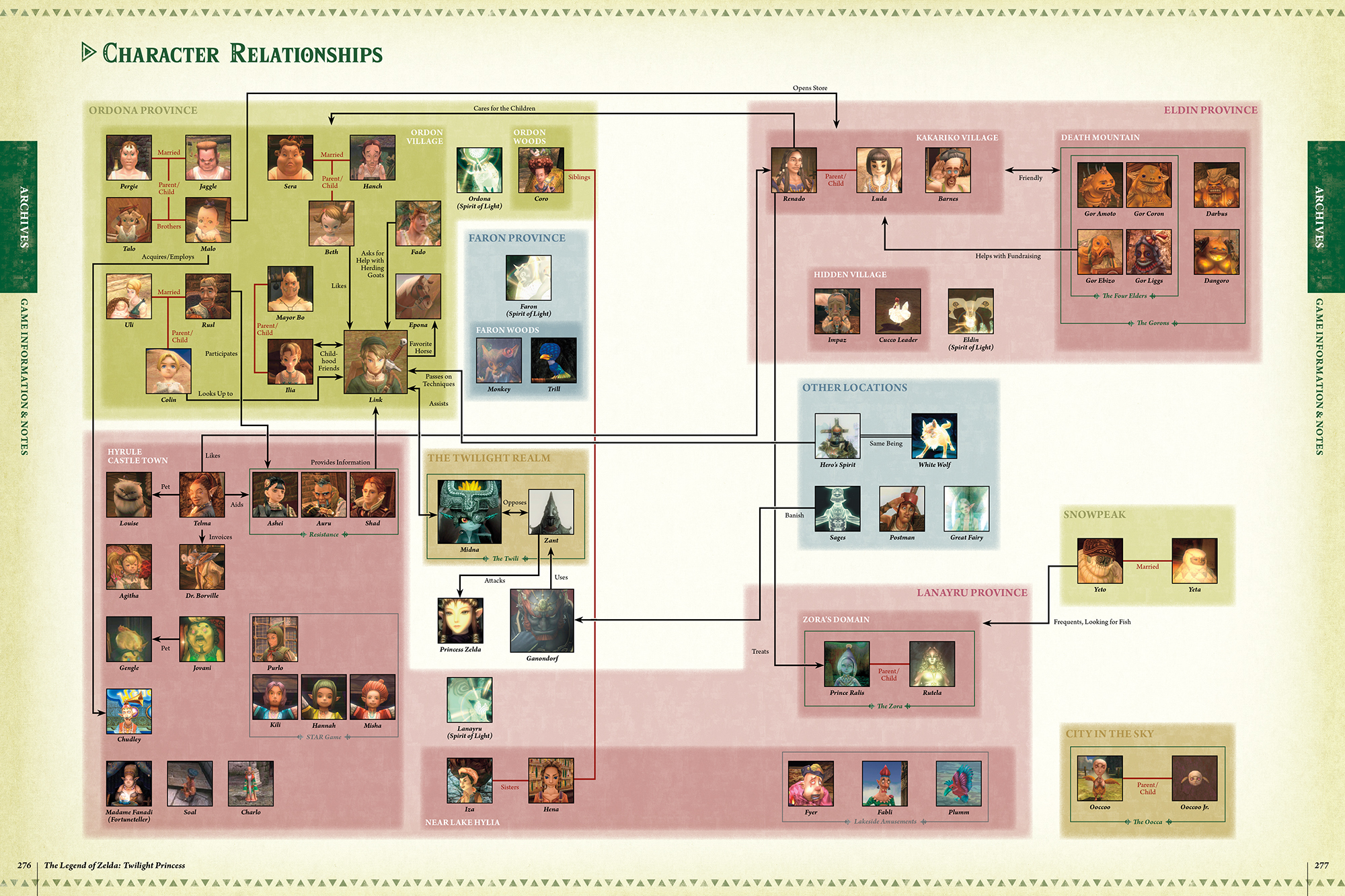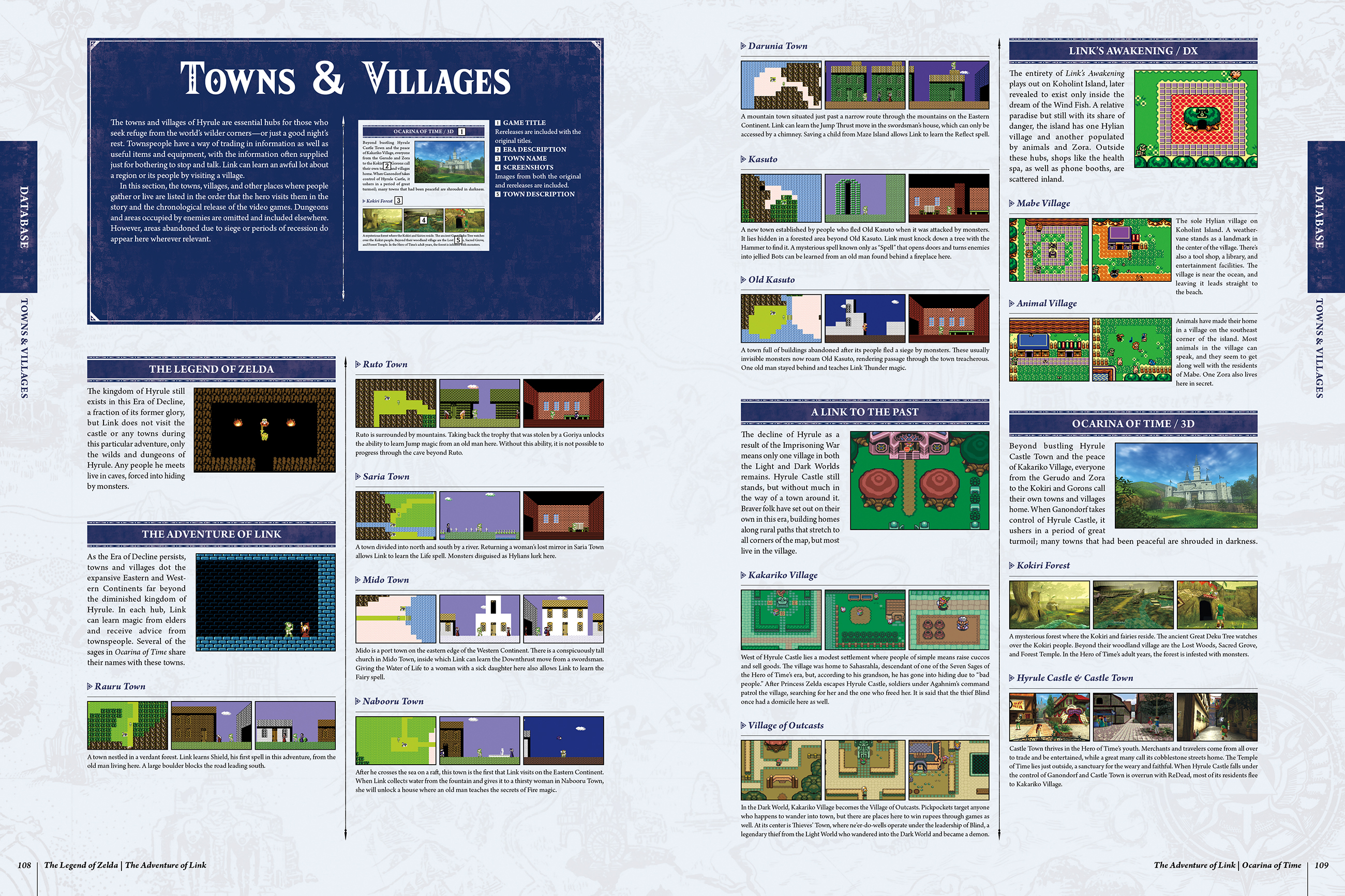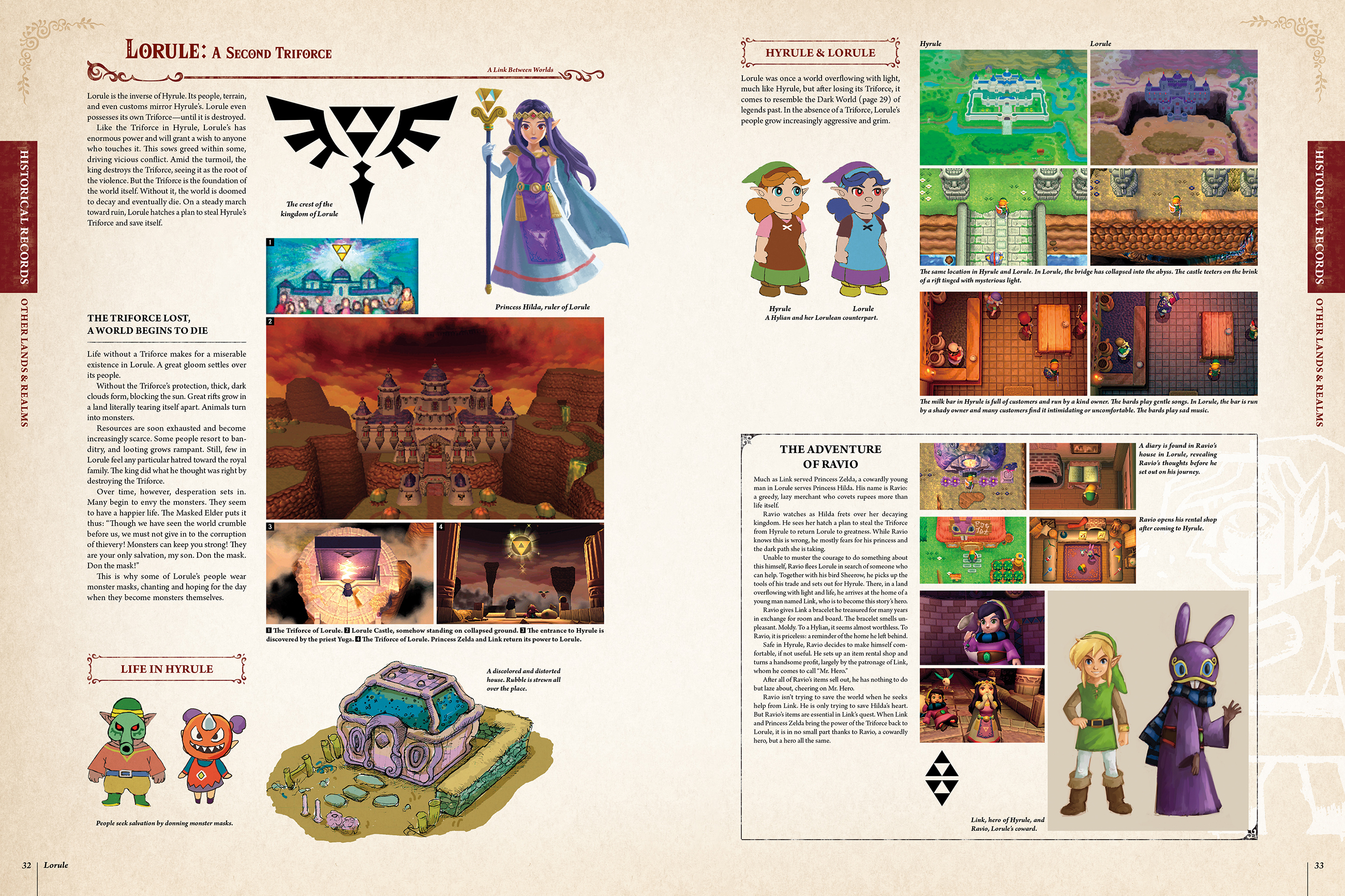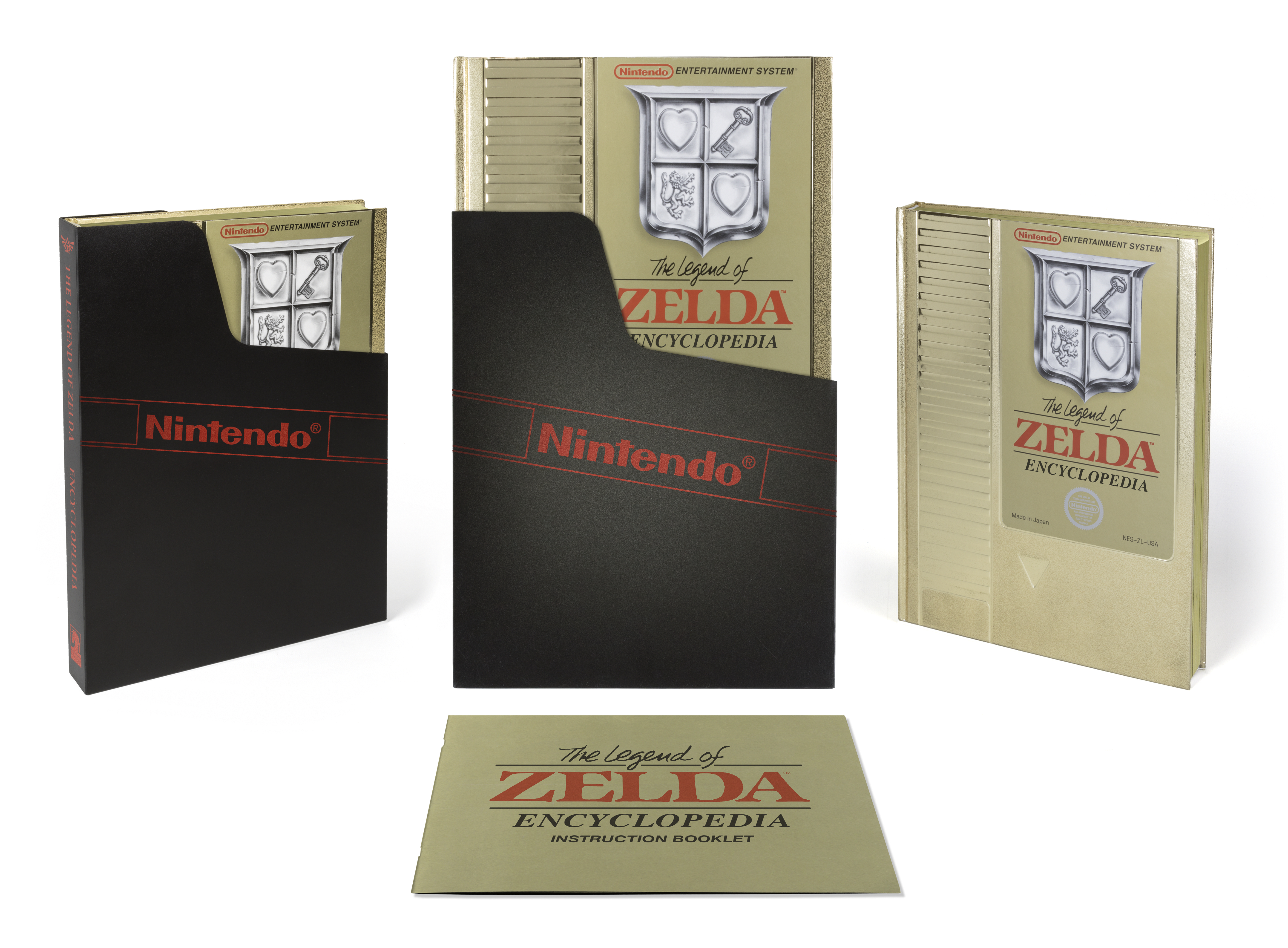‘The Legend of Zelda Encyclopedia’: Inside Dark Horse’s Next Big Art Book
By Jon Irwin
LOS ANGELES (Variety.com) – In 2013, a book called “
Hyrule Historia”
was the sixth best-selling title of the year on Amazon, right behind Khaled Hosseini’s “
And the Mountains Echoed”
and in front of Stephen King’s “
Joyland
.” But “
Historia”
is not a page-turning thriller or the work of an award-winning author. It is instead a compendium of art, notes, stories, and screenshots documenting twenty-five years of “
The Legend of Zelda
,” the long-running video game franchise that began in 1986.
Tuesday, Dark Horse publishes the third book in the series, called simply “
The Legend of Zelda Encyclopedia
,”
the most complex art book Dark Horse has ever done. For fans, these are sacred texts, making real the stories and hearsay passed down for decades. For creators, they are a window into private work never before seen, a way to share the fruits of effort necessarily stripped from, but no less essential to, the final product loved by millions. But these books have accomplished something unexpected, too: canonizing stories never built to be permanent, hemming in a gameworld known for its constant reinvention and imagination.
“These books are really hard to do,” said Patrick Thorpe, series editor at Dark Horse Comics. Thorpe has worked on all three Zelda books and is waist-deep in a fourth, focused on last year’s massive hit “
The Legend of Zelda: Breath of the Wild
.” It was Thorpe who pleaded with Nintendo of America for years to work with Dark Horse on bringing out these kinds of products to the West. High-quality art books have been more common in Japan for ages; finally relented, and “Hyrule Historia” did gangbusters. Thorpe and his team have been trusted with bringing the series over to the west ever since.
And he doesn’t take that trust for granted. In order to deliver the “Encyclopedia” for its June release date, Thorpe worked sixty days straight, often putting in eighty-four hour weeks.
“Right now I’m on a seven day turnaround,” he tells me over Google Hangout, describing his role as editor in a localization process that spans many distinct groups. “The translation team gives me their chunk. I go back and re-write it. I send it back to the Translation team. They fact-check it while doing their next chunk of translation. After it’s fact-checked, it goes to our designer. Then it goes to a proofreader and a fact-checker simultaneously. They do their thing. They turn it back to me, so I have to look at the fact-checking, the proofreading, the translation all at the same time. On this never-ending seven-day schedule. It’s absolutely insane.”
The hard work seems to pay off; the “Legend of Zelda Encyclopedia” is already in its second printing before release date, meaning pre-orders have surpassed the entire first print-run. That must feel good, I tell him. “I’m not going to feel good about it until fans get it in their hands.”
Part of Thorpe’s job involves going to shows across the country and showing off Dark Horse’s latest titles. He sees these fandoms up close. And he knows how … enthusiastic the audience can get.
“[‘The Encyclopedia’] worries me the most. There are tens of thousands, potentially one hundred thousand different things that needed to be sourced. Every single proper name, every title, every item. Where those items are in the game. Every single thing. I looked up tens of thousands of… whatever… just to make sure they were right. Stuff that was just lost to time. Or never existed in the first place.” He explains how certain enemies were never named in-game, or named in Japan but not in the United States. Thorpe had to dig into the archives and make sure every single item, object, character, event, and place is accurately documented.
With such an ambitious overview of a game series spanning decades, a few errant notes are bound to make their way into the first edition. As editor, Thorpe admits to feeling overwhelmed at times. At times when there was no right or wrong answer — if multiple sources proved contradictory, or this was the first time an item or character was named in English — Thorpe reached out to Nintendo, they made a mutual decision, and moved on.
“Fans obsess about the details in a way that creators don’t,” Thorpe says.
It’s easy to nitpick someone else’s work. It’s hard to actually start and finish the job. Creators don’t have time to sit with the minutia of their worlds the same way fans do. To take a kernel of an idea all the way through to the end requires persistence but not monomania.
Dark Horse’s video game art books fit somewhere in the middle, taking great care to create beautiful tomes based on others’ digital worlds. The second book in the “Legend of Zelda” series, which Thorpe calls the “Goddess Trilogy,” is
Art & Artifacts
. It first came out in Japan as “Hyrule Graphics” in 2016 and comprises 428 pages of drawings and concept art; these are not screenshots but the original idea as seen in the creator’s head. Translated and prepared for a western release last February, Thorpe made sure the work was presented as such: He fought to use museum-grade art paper, the better to show truer colors and more vivid lines. It cost the publisher more money, both in materials and shipping (the paper weighs more), but to Thorpe, the difference is worth it.
This modern, no-corners-cut approach Dark Horse takes with their art books didn’t begin with the Nintendo license but with a present-day Nintendo employee. Samantha Robertson, assistant manager of product marketing at Nintendo of America, used to work at Dark Horse. It was her uncompromising vision for their
“Avatar: The Last Airbender” artbook
from 2010 that set a new internal standard.
“She created the first of what I would consider our modern artbooks,” Thorpe says. “She created that 9×12 format. She was the one that dictated the quality, the materials; everything you have seen since then from Dark Horse was based on ‘The Art of Avatar.’ What she did on that book shaped my whole career.”
Dark Horse used to only create more narrative-heavy comic books with a moody edge compared to the primary colored superheroes of DC and Marvel’s ever-expanding universes. Licenses like “Aliens vs. Predator” allowed fantasy match-ups to unfold on the page long before they made it to the screen. There was some resistance from the publisher’s old guard to pivot to art books at all, imagining them as a fad that would quickly fade. But the market has bore out Thorpe’s optimism. With gaming’s huge built-in audience and decades of history, there’s a huge backlog of art and artifacts to mine. Thorpe sees potential not only in collecting what has come before, but showcasing the very latest work that never escapes the backroom.
“Every single new game has such a high budget and some of the best artists in the world,” Thorpe says. “And they create so much production material that never sees the light of day. Every new game could have a new art book. And there’d be an audience for it.”
For Thorpe, his favorite part of the experience is seeing the human fingerprints on these games, what he calls “beyond the fictional.” Even a place as fantastical as Hyrule comes from the mind of a very Earth-bound creator. “I get to be the first one to read these revelations,” from the developers, whose interviews are translated into English for the first time and included in the Western edition. Sometimes it’s just a simple anecdote that flavors one’s understanding of the Zelda world. It’s no surprise that Link can go fishing in most of his games; lead producer Eiji Aonuma loves to fish.
But sometimes making sense of a complex world can have its drawbacks.
“Hyrule Historia”
coincided with the release of “The Legend of Zelda: Skyward Sword,” the 2011 Wii game that purported to be the series’ origin story.
“‘Historia’ was the first place the timeline pops up,“ Thorpe says, referring to the book’s attempt to slot every Zelda game into a single, unifying chronology. “People drove themselves crazy over it. ‘The Encyclopedia’ is the culmination of all that: Here’s exactly how every single thing fits into this big puzzle.”
While working on last year’s “Breath of the Wild,” the Zelda team at Nintendo were confronted with a new challenge. What do we do now? They chose a path familiar to those in the comic book world. Burn it all down.
“In comic book culture, we do this every few years,” Thorpe says. “Everything since Superman has built a continuity. You have really weird shit like Captain America going to hell and fighting Satan, and that’s canon. And Thor was a horse for a second, and then he was a frog, and then he was a cyborg … Comic Books are really good at the hard and soft reboot in a way that other mediums don’t have to be. Movies have a built in timeline because your actors age. You can’t have Hugh Jackman play Wolverine indefinitely. He’s going to get older.”
Such limitations stoke the creativity of storytellers now forced to consider something they wouldn’t have to using ink and paper. Games are similarly malleable. Sometimes to their detriment.
Thorpe, tapped to work on the “Breath of the Wild” book immediately after finishing the Encyclopedia, couldn’t help but notice a stark difference.
“After thirty years, [Zelda’s developers] were just like, ‘Oh god, there’s so much clutter here.’ They finally got to that comic book point where they just swept it [away].”
While sifting through early translations for the next book, Thorpe noticed a trend in the development team’s answers: A desire to start anew. The ideas overlap with what Aonuma said to the media upon the game’s first reveal: This would be a new kind of Zelda game. For players and creators, both. “As I read these interviews, it became apparent to me that they just cleaned house.”
It’s hard to fully appreciated the mindset required to unlearn thirty years of experience. What exactly makes a Zelda game? Do we even need a Triforce? Why does he always wear green, anyway?
“Because I worked on these back to back, the contrast there was so significant,” Thorpe says. “On the last one [the Encyclopedia] I felt like Charlie from ‘It’s Always Sunny in Philadelphia’ where he’s got all the charts on the wall, and there’s strings connecting them, and he’s like, ‘No you don’t understand. ‘Ocarina of Time’ is the key to everything. It’s the Sacred Realm! That’s where everything goes wrong!’
“And then for the next one [based on ‘Breath of the Wild’] being like, ‘Maybe that happened, maybe it didn’t. He’s blue now. That’s fine. He doesn’t wear a hat. The hat was always kind of silly.’”
For a franchise to live over thirty years, it has to evolve. After three decades of iteration and evolution, Nintendo and its tunic-wearing hero had become, in some ways, cumbersome and predictable. So they solved the burden of expectation by keeping “Breath of the Wild” as streamlined and unexplained as possible. The action unfolds 10,000 years in the future. Almost everything from the past has been destroyed. Echoes and tatters of previous legends remain. Maybe they happened. Maybe they’re just stories passed down.
“They left all of their options open,” Thorpe says, impressed with efficiency as only an editor can be. “They gave themselves the maximum amount of freedom by giving the minimum amount of information.”
I mention how that’s a confident decision.
“If there is one thing Nintendo is,” he adds, “it’s confident.”
Dark Horse has every reason to share that confidence. In the art book section of Amazon, seven of the top ten books are published by Dark Horse. Six of those are based on Nintendo properties. And they’re not slowing down. This spring, Dark Horse and Nintendo announced the first ever “Super Mario Encyclopedia,” a giant reference text of all things Mario from his earliest origins to the latest blockbuster.
“That one sat on my desk for a year and half. I couldn’t get to it. It was too big,” Thorpe admits. “In an ideal world, we’d have our own Nintendo team. We’d churn out a lot more of these books.” And more are coming: alongside a comic book based on “ARMs,” Thorpe says we can probably look forward to three or four more artbooks based on Nintendo properties that have yet to be announced.
For now, his head is down, trying to get the “Breath of the Wild” book done for its Black Friday release date this November. “It’s a masterpiece,” Thorpe says. “This is by far the best of these books they’ve done. It’s not close. They thought out all this background and history that didn’t make it into the game. You can see it, you can speculate about it. But they want to talk about it.”
I mention how this sudden openness sounds at odds with a company that, for much of its long history, has been famously closed-off and secretive about their process. Thorpe thinks such reticence is less about being the eccentric genius at work in their lab and more about something all creators share: self-doubt and insecurity.
““I think there’s a little bit of embarrassment [to pulling back the curtain]. Like, ‘Hey, none of these were actually supposed to see the light of day. These were just rough drafts. Please don’t judge us.’” But in reading and translating interviews with scores of developers, Thorpe sees how important these books can be.
“Some of the younger generation have said, ‘I was inspired to become a video game developer because I saw [an artbook]. And we’re hoping this does the same for the next generation.’ And I think that’s incredibly valuable.”




